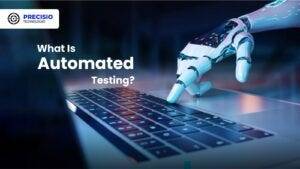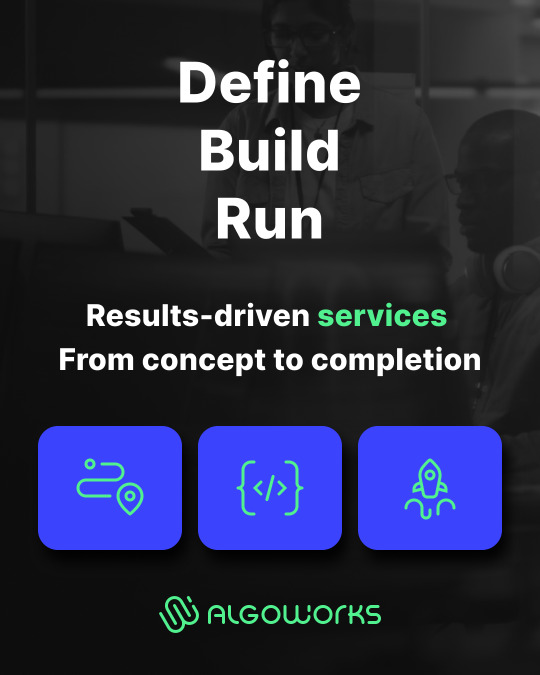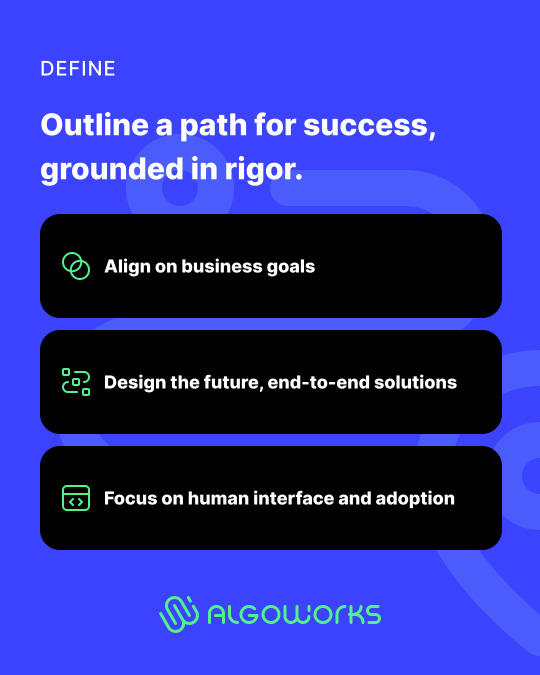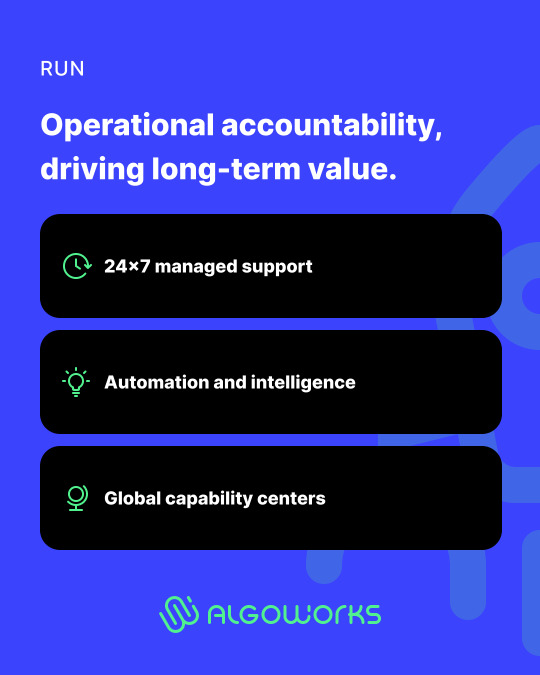#agile softwares
Explore tagged Tumblr posts
Text

#open directories#messenger#agile messenger#webcore#chat#icq#msn#yahoo#aol#google#gif#software#instant messaging
121 notes
·
View notes
Note
me when I have a mortgage

[id: phil looking bored in a sponsorship reading. end id]
me in morning standup tbh (i have rent to pay) (i'm not standing up i'm sitting down)
#asks#wdapteo#who invented the agile method#i hate them#actually do people outside software know about the agile method#do you guys have to do sprints and standups and stories too#does anyone know what a story is i've been too scared to ask
13 notes
·
View notes
Text
What is "Agile" anyway?
So...
I feel like my posts are best when I write about things on my mind. And because of my job, "dark agile" and "dark scrum" have been a lot on my mind. "Dark" basically is used to mean "Subversive" or "Pretending to do X, but in fact doing to opposite.
Dark design for example, refers to design that is worse for the users ( Making it harder to say no to cookies than yes for example).
But to talk about dark agile, I have to explain what agile actually is. I also want to do this because agile is super simple. But if you ever want to see a LOT of successful scamming, check out business management consulting. A LOT of people have a vested interest in making it sound a lot more complicated than it is and/or ignore what it actually is in favor of telling companies what they want to hear.
Agile is short for "Agile software development"
First, understanding the problem agile solves:
Small companies can change what they are doing, and how they are doing it really quickly. They are also very good at listening to their developers and put their good ideas into practice.
As companies grow larger, they quickly lose these abilities.
Agile, is a way to keep those abilities in a larger company. This is done by giving each development team freedom to develop however they want ( not WHATever they want ), and to give them as direct a line as possible to whoever is the decision maker for the thing they are developing, which allows them to change what they are developing very quickly, but in a way that still leaves that decision maker happy.
Or in other words, encourage worker empowerment and grassroot organization ( Can you guess why companies REALLY try hard to not actually do agile? :p )
That's it. That is agile... as in, all of it.
You can read the agile manifesto and the agile principles, which flushes out what exact values agile is trying to achieve, but you basically already have all the info
If you are thinking "But what about Scrum?", scrum is a proposed tool to achieve agile. It is not agile, nor is it part of agile. Agile is a goal. Scrum is a tool that may help a company reach that goal.
22 notes
·
View notes
Text
Automated Testing vs. Manual Testing: Which One is Right for Your Project?

Achieving high-quality, reliable software stands as a fundamental requirement in software development. Successful testing functions as an essential tool to discover faults and build performance capabilities that create better user experience outcomes. Two main testing methods dominate the field: automated testing and manual testing. The process of quality software assurance uses different testing approaches that demonstrate their own advantages as well as weaknesses according to specific project requirements and scenarios. We will explore the specifics to determine which testing process works best for your system development efforts.
1. What Is Manual Testing?

Manual testing involves a human tester manually executing test cases without using automation tools. Key Characteristics:
The methodology focuses its efforts on user interface together with usability and experience testing.
Human-centered applications where selection requires discretion include ad hoc testing and enumerative testing as well as examinations that need human evaluation.
Human performers are required during this approach; thus, it demands substantial time.
2. What Is Automated Testing?

Software performing automated testing executes test cases through workflows and helpers. Key Characteristics:
Efficient for repetitive and regression testing.
Users must spend money on tools along with developing custom scripts for testing.
Reduces human error.
3. Advantages of Manual Testing

Human Intuition: Software testing professionals can detect kernels through their human cognitive ability that automated tools cannot match. The observation and evaluation of visual elements runs more efficiently through human operatives instead of advanced tools.
Flexibility: This method suits exploratory testing specifically because there are no pre-determined scripts available.
Low Initial Investment: Running this approach does not need tool purchases or applications to develop automation frameworks.
Adaptable for UI/UX Testing: Running this approach does not need tool purchases or applications to develop automation frameworks.
4. Advantages of Automated Testing

Speed: Executes repetitive tests much faster than humans.
Scalability: The system proves most effective for extensive projects that need constant system updates.
Accuracy: When performing recurring actions, automated systems minimize the chances of human mistakes.
Cost-Efficient in the Long Run: Once established and implemented, the system demands costly investments but ensures continuous development expenses decrease over time.
Better for CI/CD Pipelines: Such testing technology connects various development pipelines that support agile and DevOps methodologies.
5. Disadvantages of Manual Testing

Time-Consuming: The manual performance of repeated tests leads to delayed completion of projects.
Error-Prone: Large applications contain tiny bugs that human testers commonly fail to detect.
Not Ideal for Scalability: The process of increasing manual testing needs additional testers to avoid cost escalations.
6. Disadvantages of Automated Testing

Initial Costs: Organizations must provide high financial resources to procure testing tools together with developing programming constructs.
Limited to Pre-Defined Scenarios: These testing approaches work poorly for handling exploratory or ad hoc testing.
Requires Maintenance: Test scripts need frequent updates when application changes occur.
Not Suitable for UI/UX Testing: Struggles with subjective user experience evaluations.
7. When to Use Manual Testing

Small Projects: The testing method proves beneficial at a low cost for small applications and provides quick assessments.
Exploratory Testing: Testing this approach benefits projects whose scripts have not been defined yet or need evaluation for newly added features.
Visual and Usability Testing: Performing assessments on interface components together with design features.
8. When to Use Automated Testing

Large Projects: Handles scalability for projects with frequent updates.
Regression Testing: Program testing becomes more efficient through automation since automated assessments perform multiple tests following each update process.
Performance Testing: The system performs efficient capabilities to conduct load testing and stress testing.
Continuous Development Environments: Agile progression and DevOps implementations need automation as a core requirement.
READ MORE- https://www.precisio.tech/automated-testing-vs-manual-testing-which-one-is-right-for-your-project/
2 notes
·
View notes
Text
when big, traditional companies do agile, they don’t really do agile, they do spry
bc they’re not particularly agile, but they’re much more agile than you’d expect them to be for their age
4 notes
·
View notes
Text
Review of JIRA Software by Atlassian
JIRA Software by Atlassian: A Comprehensive Review
Overall
Rating: 4.5
JIRA Software by Atlassian is a powerful tool for project management and issue tracking. Users have found it to be an invaluable asset for their organizations. The overall rating of 4.5 reflects its effectiveness and utility in various scenarios.
Ease of Use
Rating: 4.1
While JIRA is praised for its user-friendly interface and ease of use in setting up different help desks or ticket requests, some users have encountered difficulties, resulting in a rating of 4.1. However, its versatility and user-friendly aspects still make it a solid choice.
Customer Service
Rating: 4.1
Users highly appreciate JIRA's customer service, rating it at 4.1. The support received from Atlassian has been described as amazing, enhancing the overall user experience.
Features
Pros:
Efficient Task Management: JIRA is excellent for creating tasks and logging issues.
Customization: Users can set up different help desks tailored to specific departments.
Integration: It seamlessly integrates with other tools like BitBucket and Zendesk, saving time and streamlining workflows.
Cons:
Task Cloning Issues: Cloning tasks when they are marked as "Done" can be problematic.
Learning Curve: Some users find it challenging to use, leading to misunderstandings and mistakes.
Costly Licensing: The licensing structure, particularly related to plugins, can be costly.
Productivity Impact: In some cases, JIRA has been noted to slow down productivity, requiring permissions for document access.
Value for Money
Rating: Varies
The value for money with JIRA largely depends on the specific needs and budget of the organization. While some find it to be a cost-effective solution, others mention concerns related to licensing costs and limitations.
Likelihood to Recommend
Rating: Varies
The likelihood to recommend JIRA varies, with users providing ratings between 7 and 10 out of 10. It is often recommended for agile teams and project management, but the learning curve and user experience may influence recommendations.
Alternatives Considered
Trello: Some users switched from Trello to JIRA due to JIRA's wider user base and additional features.
Microsoft Project: The transformation to agile practices led to a switch from Microsoft Project to JIRA for some organizations.
Azure DevOps Services: Azure DevOps was replaced by JIRA due to cost considerations and user management issues.
Reasons for Choosing JIRA
Users have chosen JIRA for its flexibility, scalability, and extensive user base. The ability to manage multiple projects seamlessly and the availability of a strong community for support were key reasons for selection.
In summary, JIRA Software by Atlassian offers a powerful solution for project management and issue tracking, with its user-friendly interface, integration capabilities, and exceptional customer service. However, potential users should be aware of the learning curve and potential cost considerations when choosing JIRA for their organization's needs.
#jira software review#jira software reviews#jira reviews#jira review#agile software jira#jira service desk reviews#latest jira software version#jira software vs jira core#jira 2#jirav reviews#who uses jira#why jira#does jira have a free version#jira review reddit#can jira replace microsoft project#can jira be used for non software projects#can jira send reminders#why is jira so popular#is jira software#how jira software works#how to use jira software development#is jira scrum#is jira good#when to use jira#where is jira#which jira version am i using#which jira certification is best#who uses jira software#who makes jira software#why jira is bad
11 notes
·
View notes
Text
The Intriguing Role of the Number 3 in Software Management
In the world of software management, the presence of the number three is surprisingly pervasive and influential. Whether it’s in methodologies, frameworks, or processes, this number frequently emerges, offering a simple yet profound structure that can be seen across various aspects of the field. From the three-tier architecture to the rule of three in coding, the number three seems to be a…

View On WordPress
3 notes
·
View notes
Text
Dive into the world of Agile Development! Our latest blog takes you from concept to launch & strategies that boost customer satisfaction and drive market success.
2 notes
·
View notes
Text
Software Development
software development is a dynamic and complex discipline that combines technical expertise, user-centered design, rigorous testing, cybersecurity considerations, and effective collaboration. By embracing these principles, software developers can create innovative solutions that enhance productivity, improve user experiences, and drive technological advancements in various industries.
#software development#custom software development#software development company#agile software development
2 notes
·
View notes
Text
GQAT Tech’s QA Arsenal: Powerful Tools That Make Quality Assurance Smarter
In this technology-driven age, delivering high-quality software is not an optional function but a necessity. Clients now expect us to produce digital products— apps, websites, etc.-- that are made quickly and error-free. The best way to achieve this is with a quality assurance (QA) process and effective tools to adapt to their needs.
The GQAT Tech QA team calls their QA efficient and effective tools combined, and their QA arsenal productive platforms, automation, tools, and proven processes. These testing tools and approaches can help a QA team find bugs more quickly, decrease hands-on effort, and allow more test coverage depending on the software project.
Now, let's look at what a QA Arsenal is, why it is important, and how QA will help your business produce better software.
What is the QA Arsenal?
The "QA Arsenal" refers to the collection of tools, frameworks, and strategies at GQAT Tech that the QA team employs to provide quality testing to clients. The QA Arsenal is like a toolbox, where everything a tester needs to complete the project is in the toolbox.
It includes:
Automation testing tools
Manual testing techniques
Defect tracking systems
Performance testing platforms
Mobile and web testing tools
CI/CD integrations
Reporting and analytics dashboards
What Makes GQAT’s QA Arsenal Unique?
We do not use tools haphazardly. We use the most appropriate tools based on the client's type of project, technology stack, service timeline, and quality. The QA Arsenal is designed to offer flexibility and therefore considers:
Web apps
Mobile apps
Embedded systems
IoT devices
Enterprise software
Whether functional test, compatibility test, API test, performance test, GQAT Tech utilizes a custom mixture of tools to ensure that it is reliable, secure, and ready for launch.
Tools Included in the QA Arsenal
Here are some common tools and platforms GQAT Tech uses:
🔹 Automation Tools
Selenium – For web application automation
Appium – For mobile app automation
TestNG / JUnit – For running and managing test cases
Robot Framework – For keyword-driven testing
Postman – For API testing
JMeter – For performance and load testing
🔹 Defect & Test Management
JIRA – To log, track, and manage bugs
TestRail / Zephyr – For test case management
Git & Jenkins – For CI/CD and version control
BrowserStack / Sauce Labs – For cross-browser and device testing
How It Helps Clients
Using the QA Arsenal allows GQAT Tech to:
Detect Bugs Early – Catch issues before they reach end-users
Save Time – Automation reduces time spent on repetitive tasks
Test on Real Devices – Ensures compatibility across systems
Generate Reports – Easy-to-read results and test status
Integrate with DevOps – Faster release cycles and fewer rollbacks
Improve Product Quality – Fewer bugs mean a better user experience
Real Results for Real Projects
GQAT Tech’s QA Arsenal has been successfully used across different domains like:
FinTech
Healthcare
E-commerce
Travel & Transport
EdTech
AI and IoT Platforms
With their domain expertise and knowledge of tools, they help businesses go faster, mitigate risks, and build customer diligence.
Conclusion
Building a great QA team is essential, but having them equipped with the right tools makes all the difference. GQAT Tech’s QA Arsenal provides their testers with everything they need to test faster, smarter, and more comprehensively.
If you are building a digital product and want to ensure it is released in the real world, you need a testing partner who does not leave things to chance. You need a testing partner with a battle-tested QA arsenal.
💬 Ready to experience smarter quality assurance?
👉 Explore GQAT Tech’s QA Arsenal and get in touch with their expert team today!
#QA Arsenal#Software Testing Tools#Quality Assurance Strategies#Automation Testing#Manual Testing#Selenium#Appium#Test Management Tools#CI/CD Integration#Performance Testing#Defect Tracking#Cross-Browser Testing#GQAT Tech QA Services#Agile Testing Tools#End-to-End Testing
0 notes
Text
Unlock Strategic Success with Planview PPM Solutions by Winmill
In today’s fast-paced digital environment, organizations need more than just project management — they need a strategic approach to align every initiative with business goals. That’s where Planview Project Portfolio Management (PPM), delivered by Winmill PPM, makes a transformative impact. Winmill is a premier partner specializing in Planview PPM solutions, helping enterprises simplify complex portfolios, improve resource visibility, and drive better outcomes. Whether your focus is IT project governance, strategic planning, or agile transformation, Winmill tailors Planview's powerful tools to your specific needs. With Planview, organizations gain: ✅ Centralized Portfolio Management ✅ Real-Time Reporting and Dashboards ✅ Agile and Waterfall Integration ✅ Resource Optimization and Capacity Planning ✅ Improved PMO Efficiency Winmill stands apart by not just implementing software, but by empowering teams with strategy, training, and ongoing support to unlock the full value of their Planview investment. Why Choose Winmill for Planview Implementation?
20+ years of PPM experience
Certified Planview consultants
Proven success across industries including healthcare, finance, and government
Scalable solutions for organizations of all sizes Explore how Winmill can elevate your project execution and strategic alignment. 👉 Learn More: https://ppm.winmill.com/
#planview software#broadcom clarity ppm#winmillppm#clarity project management tool#marketing#agile software development#resources#software engineering#clarity ppm
0 notes
Text





We follow our Define, Build, Run framework to execute flawlessly. From deep listening and 360° planning, to building with agile development and clean code, we ensure performance, security and return on investment through 24/7 monitoring and SLA-backed delivery.
Visit our website to learn more! https://www.algoworks.com/services/
#digital transformation#agile development#clean code#software engineering#cyber security#enterprise solutions#tech innovation#cloud services#innovations#technology#leadership#business excellence
1 note
·
View note
Text
IT projects fail for all kinds of reasons — but lack of structure tops the list. No clear roadmap. No visibility. Missed deadlines.
That’s where a solid project management framework makes all the difference.
At XB Software, we’ve learned (sometimes the hard way) that PM isn't just task lists — it's the operating system of successful delivery.
✅ This article breaks down our proven approach, why it works, and how you can adopt it — whether you’re building an MVP or modernizing legacy software.
#project management#agile project management#outsourcing#software development#web development#staff augmentation#custom software development#it staff augmentation#custom software solutions#it staffing company#it staff offshoring#custom software
0 notes
Text
From Value Streams to Team Streams: Designing for Flow
Designing for flow is the cornerstone of modern digital delivery—but many organizations are still stuck optimizing for output instead of outcomes. Features are delivered, tickets are closed, yet customer impact remains unclear. Why? Because the way work flows through teams is just as important as what gets done. To unlock real performance, we must rethink how value flows—through people, teams,…
#agile delivery#designing for flow#DevOps#digital delivery#lean agile#organizational design#outcome focused teams#product development#Product Ops#software teams#team streams#team topologies#value streams#workflow design
0 notes
Text
How ISTQB 4.0 Aligns with Agile and DevOps Trends in Software Testing
The software development landscape is transforming rapidly with Agile and DevOps becoming the new norm. To remain relevant, software testers must adapt their knowledge and certifications accordingly. The ISTQB Foundation Level 4.0 syllabus reflects this evolution, embedding Agile and DevOps principles into its core. In this blog, we explore how ISTQB 4.0 aligns with Agile and DevOps practices and why this matters for testers in 2025 and beyond.
Agile and DevOps: Driving Modern Software Testing
In today’s fast-paced tech environment, Agile and DevOps methodologies dominate. They demand:
Faster delivery cycles
Continuous integration and deployment (CI/CD)
High collaboration between developers, testers, and operations teams
Traditional testing methods alone no longer suffice. This is where ISTQB 4.0 steps in.
Key Ways ISTQB 4.0 Supports Agile and DevOps
1. Integrated Agile Principles
Agile isn’t a side topic anymore - it's integrated across the syllabus.
Emphasis on collaborative testing, incremental development, and fast feedback loops.
2. DevOps Readiness
Introduces key DevOps concepts: Continuous Testing, Shift Left Testing, and Test Automation in CI/CD Pipelines.
Prepares testers to work in environments that require rapid delivery without sacrificing quality.
3. Iterative Test Process Model
ISTQB 4.0 replaces rigid test models with flexible, iterative approaches that align with Agile sprints and DevOps workflows.
4. Collaboration and Communication Skills
Recognizes the tester’s role in cross-functional teams.
Focus on effective communication, a critical Agile and DevOps skill.
5. Risk-Based and Exploratory Testing
Encourages testers to use context-driven approaches that fit dynamic Agile and DevOps projects.
Why This Matters for Your Career in 2025
Stay Competitive: Agile and DevOps skills are now must-haves in job descriptions.
Boost Employability: ISTQB foundation level 4.0 certification shows you’re ready to contribute in modern QA environments.
Foundation for Advanced Learning: Whether you pursue Agile Tester, DevOps certifications, or Test Automation, ISTQB 4.0 is the first step.
How Testometer Helps You Align with Agile and DevOps
At Testometer, we specialize in preparing professionals for the ISTQB Foundation Level 4.0 exam with a focus on real-world Agile and DevOps practices.
Live sessions by industry experts
Mock tests and hands-on exercises
Official ISTQB 4.0 study materials
The ISTQB 4.0 syllabus doesn’t just update terminology - it aligns software testing with how modern development works. For anyone serious about a career in QA, now is the time to understand and implement Agile and DevOps principles.
Join Testometer's ISTQB 4.0 Certification Training today! Gain skills that match industry expectations and clear your certification with confidence.
0 notes